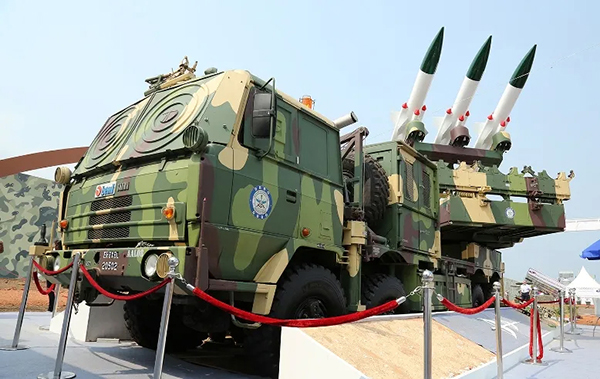
India will stop the import of 101 weapons and military platforms like transport aircraft, light combat helicopters, conventional submarines, cruise missiles and sonar systems by 2024.
The defence ministry on 28 March said it plans to procure military equipment worth Rs 5 lakh crore from the domestic industries in the next five to seven years in line with its policy of promoting indigenous defence manufacturing.
Minister of State for Defence Ajay Bhatt put out the projected figure of procurement from domestic sources while replying to a question in Rajya Sabha.
In August 2020, the ministry announced that India will stop the import of 101 weapons and military platforms like transport aircraft, light combat helicopters, conventional submarines, cruise missiles and sonar systems by 2024.
A second list, putting import restrictions on 108 military weapons and systems such as next-generation corvettes, airborne early warning systems, tank engines and radars, under a staggered timeline was issued in May last year.
In December, the ministry released a list containing 2,500 items, which have already been developed indigenously.
It also released a list of 351 equipment that will be developed within the country by December 2024.
The minister in his reply mentioned the lists and the government’s priorities.
“The positive indigenisation list comprises defence equipment which will be designed, developed and manufactured over a period from 2020 to 2025,” he said, adding that the it was not possible to assess at this juncture the actual on account of the decision to not import the items.
“However, as per available projections, it is estimated that over approximately Rs 5 lakh crore worth of equipment included in both the positive indigenisation lists will be procured from domestic industry over the next five to seven years,” he said.
In the last few years, the government has taken a series of measures to boost domestic defence manufacturing.
In May last year, the government announced increasing the FDI limit from 49 per cent to 74 per cent under the automatic route in the defence sector.
India is one of the largest importers of arms globally.
According to estimates, the Indian armed forces are projected to spend around USD 130 billion (one billion is equal to 100 crores) in capital procurement in the next five years.
The government now wants to reduce dependence on imported military platforms and has decided to support domestic defence manufacturing.
The Defence Ministry has set a goal of a turnover of USD 25 billion (Rs 1.75 lakh crore) in defence manufacturing in the next five years that included an export target of USD 5 billion (Rs 35,000 crore) worth of military hardware.
The government on Monday said that a total of Rs 3,343 crore has been received as foreign direct investment (FDI) in the defence sector since 2014.
In response to a question in Rajya Sabha, Defence Minister Rajnath Singh said the defence sector needs continuous investment for capacity enhancements and the creation of state-of-the-art technologies.
“During the period from 2001-2014, a total FDI inflow of about Rs 1,382 crore was reported and from 2014 till date, a total FDI of about Rs 3,343 crore has been reported,” he said.
To a separate question, Minister of State for Defence Ajay Bhatt said the “term ‘Matryr’ is not used in Indian Armed Forces.”
He was asked about the definition of martyr and whether the government has stopped the use of the word for those who made supreme sacrifices in the line of duty.
Asked whether the government is considering a system of conferring letters of acknowledgement from the President and the Prime Minister’s Office on the families of armed forces personnel killed in action, Bhatt said no such proposal has been received for consideration.
To another question, Bhatt said the government created the Defence AI (Artificial Intelligence) Council (DAIC) in 2019 for providing necessary guidance to enable and effect the development of an operating framework for the adoption of the application of AI in the defence sector.
He said all the three services have established institutional mechanisms in the form of AI Sub Committee and Joint Working Group on AI.
“As part of the data management framework, the services have formulated data policy and appointed data management officers,” he said.
Bhatt also said that the budget allocated and utilised in the past three years for the research and development of indigenous defence aircraft was Rs 3,280 crore and Rs 2,835 crore respectively.
He said 100 per cent rate of success has been achieved for the various research carried out for the development of indigenous defence aircraft.

















